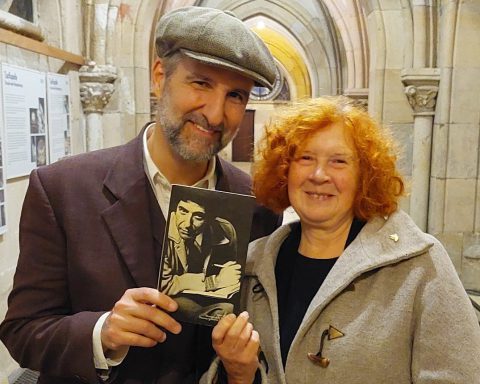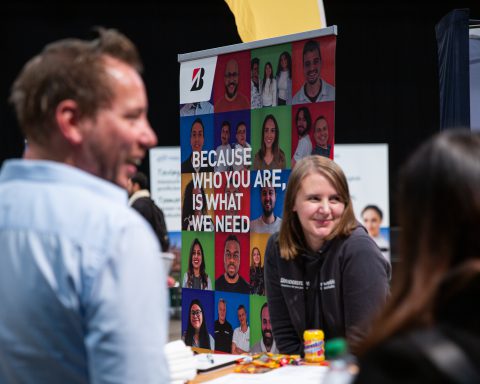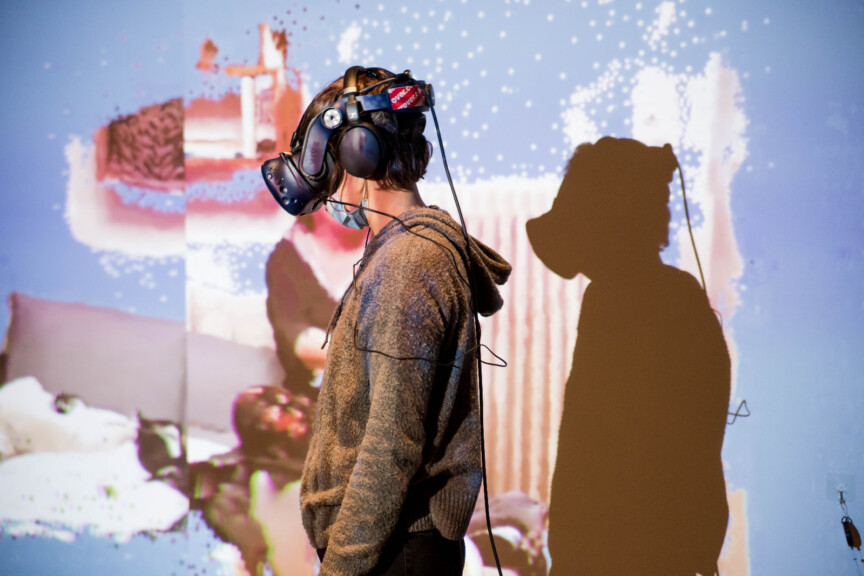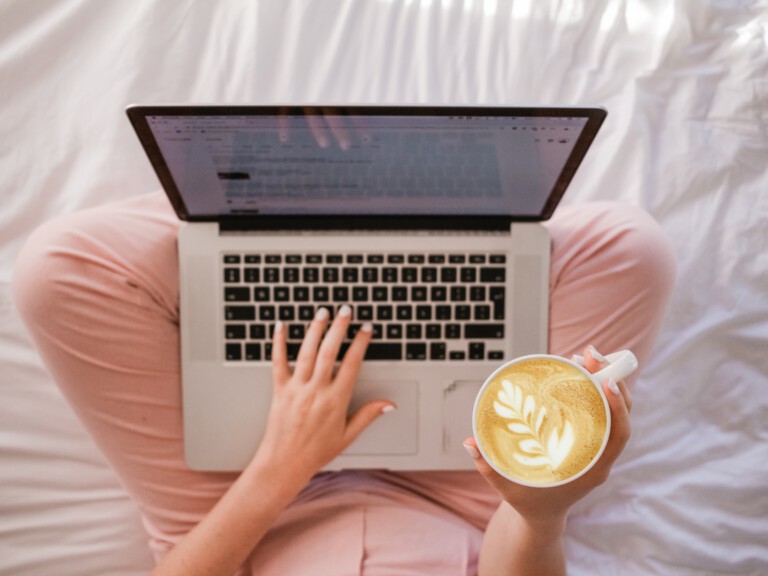At the beginning of this year, Grassi Museum of Ethnology’s Director Léontine Meijer-van Mensch invited LeipGlo to co-host a networking night at the museum. The night was a great success and we intended it to be the beginning of a whole series of events at Grassi. Then the Covid-19 pandemic happened – a bummer for Grassi and for us. So how have Léontine Meijer-van Mensch and her colleagues been coping and how has the pandemic affected their work? I figured it was time to touch base.
Note: This interview was conducted on the 29th of June this year, after the first lockdown.
One job, three offices
Léontine Meijer-van Mensch is the Director of the Staatliche Ethnographische Sammlungen Sachsen (the Ethnographic State Collections of Saxony). She is responsible for three Ethnological Museums in Saxony: the GRASSI Museum für Völkerkunde in Leipzig and the Museums of Ethnology in Dresden and Herrnhut (in the Upper-Lausitz in the east of Saxony). I asked (g)local Léontine, who is Dutch, works in Saxony and lives on the Czech side of the border area, how she splits her time between all three workplaces, what her vision for “her” museums are and how the current situation affects the museums, both from a financial and social point of view.
Note: There are three different museums grouped in the same beautiful building at Johannisplatz. In this interview, I will refer to the Grassi Museum of Ethnology as “Grassi” only to make it a more enjoyable reading experience.

Lisa Renner: Léontine, how are you doing? How have you been spending these past weeks of isolation and social distancing?
Léontine Meijer-van Mensch: The past months have been hectic and calm at the same time. We had a lot of things to organize, a lot of logistics and people management to do. The museums were open again, but are closed again. The crisis will affect our work for a considerable time, I am afraid.
Seems like the pandemic also had a positive effect on your work-life balance?
One thing I was really able to enjoy during the time of the restrictions, were the many calm moments in the cities where our museums are. I took a lot of time wandering through and around Leipzig, for example. I have been in my position [as Director of SES] for more than 1.5 years and have of course discovered many things in Leipzig, Dresden and Herrnhut. However, for me it took a global pandemic to be able to look a bit deeper into the history, traditions and the background of these places. Normally, I do a lot of international conference hopping, but that all changed during the pandemic. There were a lot of video calls, but they didn’t take up the whole day, so I was simply able to stroll through Leipzig afterwards. I could unwind really well.
Where or how did you notice the impact of the pandemic the most so far?
I had to quarantine earlier in the crisis, because I had attended a conference in Tanzania and there was a chance I had been in touch with a person who tested positive for Sars-CoV-2. Even though I tested negative, I still stayed in my apartment for two weeks after returning. That was a unique opportunity to get to know my neighbors, my staff, the members of my network. Some neighbors took in parcels for me, so we started chatting a lot more after I stopped quarantining. Sometimes I wondered whom I could ask to pick up a loaf of bread for me while locked in the apartment. I hesitated to ask my colleagues and staff at first, because as the boss, you know, I didn’t want to overstretch my staff’s trust and patience – but it was never a problem. Everyone was so kind to me, I really made a lot of new friends.
Sounds like you are part of a great team?
Our staff is fantastic. I finally had more time to get to know them on a more personal level; to listen to their stories, learn about their backgrounds, hear about their worries and anxieties during the crisis. I am so grateful that they shared all of that with me. That will positively affect the already good work we are doing together. This probably wouldn’t have happened without the pandemic, or certainly not as quickly.
For me personally, the past weeks were made of a lot of slowing down, a lot of unwinding, everything felt a bit zen-ish. Where I normally always have my suitcase packed, ready to hop on the next train to a conference or meeting, I was actually able to unpack everything! That felt great.
You are responsible for three museums in three different cities and towns in Saxony. How do you make sure they all get enough of your attention, and where do you relax after hopping between all three places?
It’s a lot of travel. We have three museums in three very different cities, on three very different stages so to speak. The schedule can be very strict at times, but it is this careful planning that ensures I get to spend enough time in Herrnhut, Dresden and Leipzig. I can board a train – I enjoy that actually very much – and do a few things while commuting to the next appointment.
How do you unwind from all this?
Relaxing is very important after work. I learned that I have to be able to detach myself from work in order to do the best I can. I need that helicopter perspective to be able to work without bias, to solve possible conflicts and to work passionately!
Is it very challenging to manage three houses at the same time?
It helps that I am not an ethnologist, but the director of the museums. Besides some very specific aspects, there is also a lot of general knowledge involved. I am the generalist and my staff are the specialists. Therefore I have to provide a structure for them. But that is what I like, I am very open and find it easy to talk to people. I have always been curious and had a lot of energy. Sometimes I get bored easily, which is why I like to work and do so much.
My calm place is my home in the Czech Republic, just behind the border. My husband and I bought it a few years ago and in the calmer weeks of the pandemic, I just sat there and looked out of the window into the woods. It’s something so beautiful, so grounding!

A natural distance between the three cities
In what way are the three museums and workplaces different from one another?
They each have a very different energy, culture and identity. That creates a lot of synergy, but can also bear potential for conflicts. There is a natural distance between them.
In Dresden, for example, I am surrounded by the professional environment of the State Art Collections. The city has this beautiful baroque style centre; it really embraces you. Leipzig offers a totally different cultural atmosphere – a blast of energy coming at you.
Leipzig (…) – a blast of energy coming at you.
Herrnhut sticks out a bit, of course. It is the smallest museum and town of all three [author’s note: Herrnhut has ca. 5,900 inhabitants compared to more than 600,000 in Leipzig and ca. 557,000 in Dresden]. Especially in the pandemic, once we have been able to open the houses again, Herrnhut was much more frequented in terms of percent than our houses in Dresden and Leipzig. The visitors there are a bit older than our average and we also get a lot of tourists, cyclists from Leipzig or Dresden, for example. Herrnhut is a center of contemplation for me, filled with a lot of heritage. It is a special place and it fits what we like to do.
Simply hanging out: A place without an obligation to consume
From our Leipzig-based perspective, the Grassi Museum of Ethnology has done a lot over the past years to offer its visitors and employees new perspectives. One of the many things that changed: You helped to open up the museum yard and installed sun chairs.
We have done a lot already to reposition Grassi as a social space in Leipzig’s center. A place you can simply hang out at, where you don’t have to consume anything in order to relax, where you can simply be. It is something meaningful, something social. I’d like the museum to be a place where socio-political problems, inequality, migration and other important topics such as global warming can be discussed.
A place for everyone in Leipzig?
Yes, the museum should be a place for all in general: for the older generations who grew up in the GDR context and who are the stakeholders in the history of our museum; for the younger generations who tend to be lefty and hippie-ish in Leipzig; for the locals and the new Leipzigers who came here with many different stories.

An open ear and a stage for young museum visitors
We noticed that you and your team implemented new exhibition and event concepts. Younger crowds are attending art or debate nights that the museum hosts.
Many things are changing. We have started to reconceptualize our permanent ethnographical exhibition and are working on a place for the younger visitors in our museums, for example teenagers. They are not children anymore but not yet university students, so we have to address them differently. The working title is “Einfach mal zuhören” (Simply listen). It will be a participatory place, a place to inscribe oneself, an anti-racist space where the young visitors will be able to curate on their own.
Re-Inventing the concept of an Ethnology Museum – away from the post-colonial top-down perspective
It sounds like you are trying to think outside the box when it comes to the concept of a rather classic museum?
We call our project “Re-Inventing Grassi 2023”and invited the staff and the people of Leipzig to a first meeting in January. During these “Woonkamer” [Dutch for living room] sessions, we explain and discuss a lot. We want to involve the community from near and far and strengthen the relationship with our staff. The second edition happened at the end of September and we were very grateful that people care about the museum so much that they joined us for the talks.
That’s amazing! It’s interesting to see the museum, a rather classic institution of education and culture, opening up. Grassi’s online resources on social media seem to be steadily growing?
Well, the Covid-19 pandemic kind of “warped” us into our personal social media future. We asked ourselves, what is a museum visit? Is it only walking through the museum galleries? No, it’s so much more. The museum’s yard and park can be part of it, our social media profiles can be part of it. I want to make our whole permanent collection accessible online. That would make provenance research that we have been putting so much effort in over the past years much easier. We also had to ask ourselves how to stay relevant in times of the coronavirus, and social media really helped. However, our museum does not have the budget of the British Museum or something comparable. I cannot afford to employ a social media or digital curation liaison officer. But we have an online strategy for all of our projects now. I am very proud of my team.
I guess changing the structure of something from its inner core to the surface takes time. Some changes are visible though: Your team has been including members of migrant groups in the curation of your exhibition. I for example think of the Megalopolis installation from artists of the Democratic Republic of Congo and Re:Orient exhibition from and with Muslim artists. Due to provenance research, you have been able to return some of the human remains of First Nations people of Australia and also Namibia to their descendants or to members of their tribes.
In general, the ethnological discourse is happening, it’s present. When it comes to our museum, the members of our staff make it happen. My colleague Birgit Scheps-Bretschneider for example is one of the driving forces when it comes to returning remains from colonial times. She follows such an inspirational approach to the kind of work we do. And this approach was one of the reasons why I came here.
How do you start such a project? Is it the collaboration of the whole team or perhaps the drive of directors like you or your predecessor Nanette Snoep?
In the beginning there is always trust, there is commitment. Someone has to show the people involved that a project will not only be made for PR reasons. A lot of profound research has to be done. We have to think and talk about our own ambivalent past. Does a project end when we return the remains of a tribe member or do we start a long-term commitment and involve not only the past but also the present and future? My work was also inspired by French-German art historian Bénédicte Savoy who co-wrote the Report on the Restitution of African Cultural Heritage together with the Senegalese scientist Felwine Sarr. This report [commissioned by French President Emmanuel Macron, author’s note] tries to establish a new ethical relationship, the relational ethics. It inspired my work as director of an ethnology museum.

How do you approach the return of collection items from the museum?
A lot of our objects came to our museum in highly controversial contexts: They were robbed, taken during lootings and much worse. I cannot speak for all, but my staff is very much committed to taking this responsibility seriously. I think that Germany is doing well in this, even though it’s not at the forefront of the restitution process. The train is rolling though. I am very happy that we are onboard and this train is picking up speed.
In November 2019, you and your team returned the remains of 42 members of the Australian First Nations to their respective tribe members who traveled to Leipzig for the occasion. Some had left the Australian continent for the first time. How long did it take to prepare the different ceremonies? How does it work on a diplomatic level? Did you need the help of the Australian Embassy in Berlin or of the German Embassy or Consulates General in Australia?
The whole process is a huge community effort. It has to happen locally, nationally and internationally. We need the support of the communal, federal and national governments on both sides [of Germany and the nation where human remains and objects will be returned to, author’s note]. The former Saxon State Minister for Science, Culture and Tourism Eva-Maria Stange did a lot for this matter. It was important to her on a personal level and her work reflected that. It’s very much a hands-on approach in Saxony, people here do things instead of just talking about it. When we returned the human remains of 45 of First Nations ancestors to their tribes in Australia, we also had a lot of support from the Australian Embassy in Berlin. This mix of work and help makes our work possible.
It seems that the State Art Collections revolve around reclaiming cultural diversity in Saxony. Will there be more projects like the above mentioned?
One thing about our museum is that we have the power to give our space to people who we think deserve to be heard. This is politically and culturally important. Saxony has a very diverse history when it comes to culture. There are ties to our neighbors Poland and the Czech Republic, connections to states where a lot of “guest workers” came from, for example Vietnam. Migrants came to Saxony, especially of the past years, enriching our culture. We will try to focus on this in the years to come and take the different cultural input into consideration.
You are also part of the founding committee of the German American Institute Saxony (Deutsch-Amerikanisches Institut Sachsen, DAIS), and act as their Vice President. Can you tell us a bit more about this project and why it is so important to you?
It is a big honor for me that I was asked to be part of the board. Our museum has a very big collection of objects related to Native American peoples. In a museal context, the United States is very important when it comes to the debate on human rights, on the First Nations, etc. It has transformed the museum context to see differently in the sociomuseology context. DAIS tries to foster the Saxon-American, German-American and European-American relationship. We offer educational programs, business roundtables and work in schools, universities, libraries and cultural institutions. We have a regular podcast about the relationships and try to cover topics such as the elections or the Black Lives Matter movement.
Do you think you can benefit from the position at DAIS as much as this project can benefit from your work?
This work is a two-way street, I get inspired and try my best to inspire the others. US academia is very inspiring for cultural life. Being part of this project makes me feel like I can be part of two worlds at the same time and learn a lot from it. In our part of the world, the US is an important country when it comes to culture. I love contemplating it, I love the pop culture. There are many highs and lows in the relationship with the United States, but no matter how, the input is always very inspiring. In addition to that, we for example offer the museum as space for debate nights or as election room. That attracts people who may not know Grassi yet or who may not go to museums too often, so everyone benefits.
You also just became a board member of the Karl May Foundation in Radebeul near Dresden. You are definitely not afraid of putting more work on your plate.
I think it is so important to engage oneself in society, for society. It’s good to get involved! Sometimes I think that maybe our generation somehow “forgot” to get active, to be part of society. I am looking forward to this challenge a lot!
Last but not least, can we hope for future cooperations between Grassi and LeipGlo?
Of course, you are always welcome here. The networking night in January was exactly what we hoped it to be. We have to find a new normal in this pandemic and we will. I am looking forward to having you in the house again!
The Grassi Museum of Ethnology, when not in pandemic lockdown, is open Tuesdays to Sundays from 10 a.m. – 6 p.m. Admissions are between 8 and 6 Euro. Every first Wednesday of the month is free of admission. Please note that parts of the permanent exhibition about Europe and Asia on the first floor are closed until further notice. Check our museum guide for open days!








![Wine & Paint event on 9 Nov. 2024 at Felix Restaurant, Leipzig. Photo: Florian Reime (@reime.visuals] / Wine & Paint Leipzig](https://leipglo.com/wp-content/uploads/2024/12/pixelcut-export-e1733056018933-480x384.jpeg)
